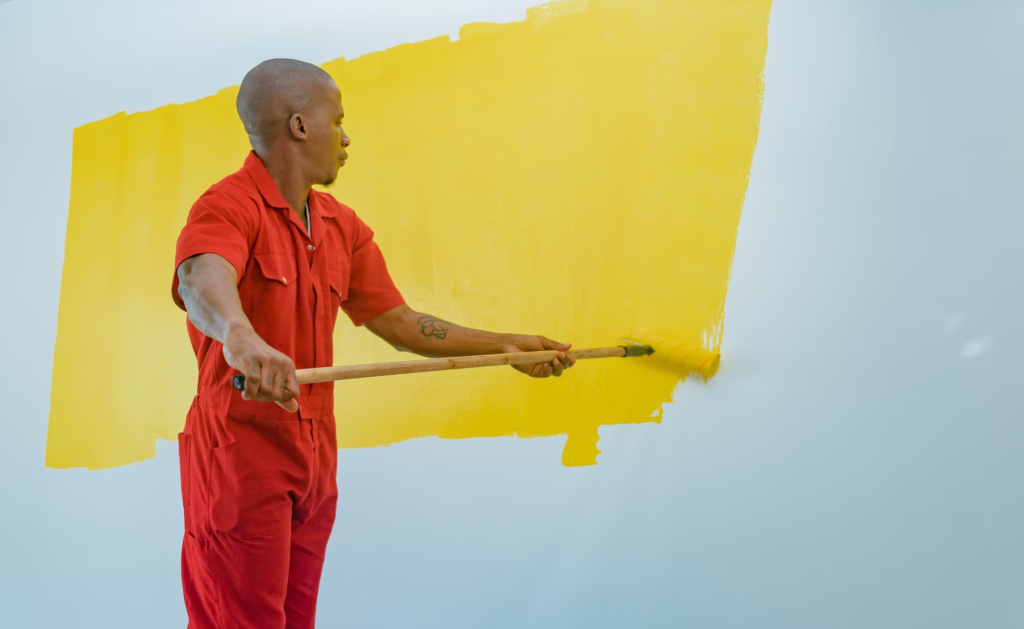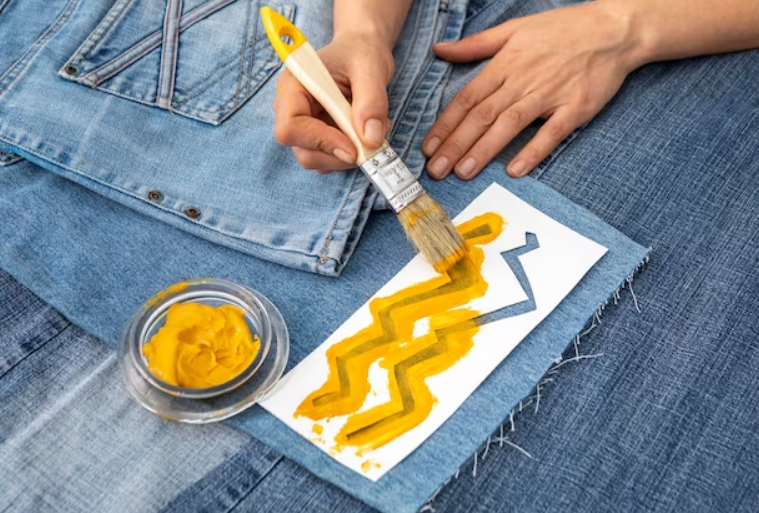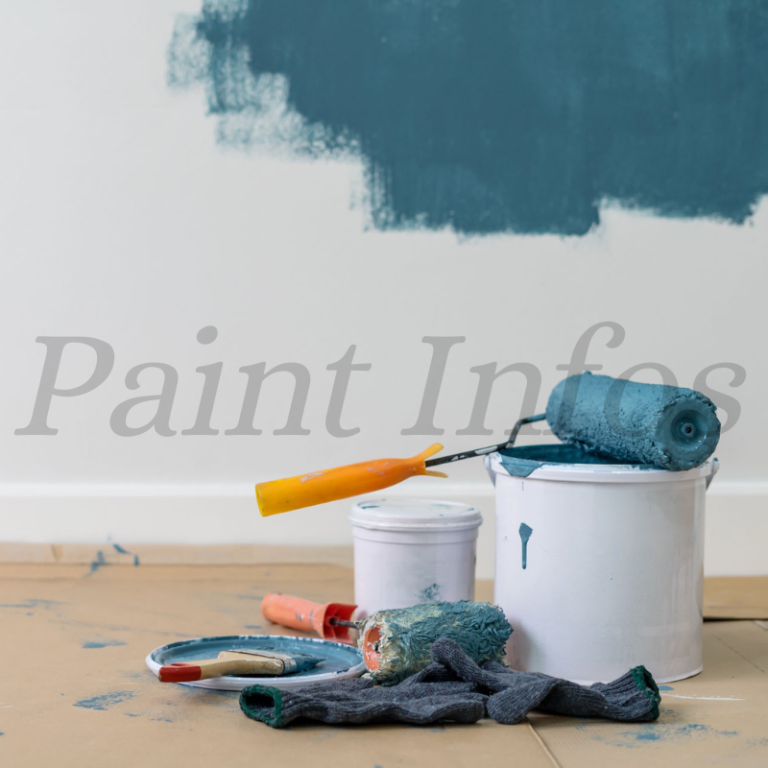Making many decisions before starting a painting project includes selecting colors and the kind of brushes or rollers you’ll use. Priming, however, is a crucial step that must be taken before choosing any particular hue because it can determine how long-lasting and successful your paintwork will be.
Primer provides a smooth, even canvas that guarantees the greatest possible finish, acting as the base for your paint. But among all the planning, one concern frequently arises: is it okay to leave primer unpainted?
Primers should generally not be painted without a reason. The primer is designed to provide the surface with a key so the paint will stick to it.
The attributes that a topcoat of paint is intended to withstand, such as resistance to moisture, UV rays, and other external variables, are often lacking in unpainted primer. A final coat of paint should be applied for maximum priming benefits in terms of long-term durability and visual appeal.
What is Primer?
Primer is the underappreciated hero of the painting world, a preliminary coating laid down before the paint itself. Its primary function is to ensure a secure bond between the surface and the paint and to improve the finish’s durability and aesthetics.
Primers are formulated to address specific problems like stains, odors, or uneven textures, making them indispensable in achieving a flawless finish.
Types of Primers and Their Uses
Choosing the correct primer is just as important as selecting the correct paint. Primers are made expressly to prepare surfaces for painting; the type used depends on the surface’s composition and desired finish. Here is a more thorough examination of the many kinds of primers and their applications.
- Oil-Based Primers: Known for their durability, oil-based primers are a good choice for surfaces that will endure frequent cleaning or heavy use. They work exceptionally well on wood, as they penetrate into the grain, providing a smooth base for paint. They are also effective on metal surfaces, preventing rust, and are ideal for areas prone to high humidity. However, they do have a strong odor and require mineral spirits for cleanup.
- Latex-Based Primers: These are water-based primers, making them environmentally friendly with easy cleanup. Latex primers are less likely to cause yellowing over time and are faster to dry than their oil-based counterparts. They are best suited for soft woods, drywall, and brick. Latex primers are also more flexible, making them a good choice for surfaces that may expand and contract with temperature changes.
- Shellac Primers: With excellent stain-blocking capabilities, shellac primers are the go-to for surfaces with severe stains or odors. They can be used on both interior and exterior surfaces, including wood, plaster, metal, and even plastic. Shellac primers dry quickly and are effective in blocking water, smoke, and nicotine stains, making them a versatile option for restoration work.

- Bonding Primers: Ideal for surfaces that are tough for paint to adhere to, such as glossy finishes, tiles, PVC, or glass. Bonding primers are specifically formulated to stick to these surfaces, ensuring that subsequent paint layers adhere properly. This type of primer is particularly useful for kitchen and bathroom surfaces, where you might encounter tiles or laminates.
- Stain-Blocking Primers: These are designed to prevent stains from bleeding through the new paint. They’re particularly useful for covering up water or smoke stains and can be found in both oil-based and water-based formulations. Stain-blocking primers are also recommended when painting over a dark color with a lighter one.
- Mold-Resistant Primers: In areas with high moisture levels, such as bathrooms or basements, a mold-resistant primer can help prevent the growth of mold and mildew. These primers contain antimicrobial properties that protect the painted surface from fungal growth.
- High-Build Primers: These are thick filler primers used to even out rough or uneven surfaces like plaster or drywall. They help to create a smooth, level surface for painting, which is especially important when aiming for a high-quality finish.
- Multi-Surface Primers: These versatile primers can be used on various surfaces. They are a good choice for projects that involve multiple types of materials, simplifying the priming process.
Each type of primer is formulated with specific properties to address different challenges. Choosing the right primer not only ensures better adhesion of the paint but also enhances the durability and appearance of the final paint job.
Can You Leave the Primer Unpainted?
Leaving primer unpainted is ill-advised because the primer is not formulated to function as a final coat. It lacks the components that give paint its durability, such as additives that resist UV radiation, weathering, and stains.
Here are key reasons why primer should not be left unpainted:
- Durability: Paint contains durable resins that form a hard, protective surface. On the other hand, Primer is softer and more susceptible to damage.
- UV Protection: Primers are not designed to withstand UV light. Prolonged exposure can degrade primer, leading to a loss of integrity and adhesion.
- Moisture Resistance: Unlike paint, primer is porous. This means it can absorb moisture, which can lead to peeling, blistering, and mold growth.
- Aesthetic Finish: Primers are not made to provide the smooth, clean surface finish that paint does. They can appear chalky or dull and can easily become stained.
- Adhesion: The Primer’s primary role is to provide a key for the paint to adhere to. Without the paint, the surface remains incomplete and vulnerable to peeling.
- Surface Protection: Paint acts as a sealant, while primer does not. Unpainted primer won’t protect surfaces from wear and tear or corrosion over time.
For the protection and longevity of your surface, it’s essential to apply a top coat of paint over the primer. Although a newly applied primer may seem good at first, it might cause a number of problems in the long run.
Primer’s quality can be lowered by exposure to UV rays, moisture, and temperature fluctuations without a protective topcoat. When the time comes to paint, this could lead to peeling, cracking, and a weakened surface that needs further preparation.

How Do You Choose the Right Primer for Your Project?
Selecting the appropriate primer is essential for any painting project’s success. Here’s how to pick the right one:
Identify the Surface Material:
- Wood: Oil-based or latex primers for bare wood.
- Metal: Rust-inhibiting primers for iron and steel.
- Drywall: Drywall-specific primers to seal the surface and reduce absorption.
Consider the Finish:
- Glossy Surfaces: Bonding primers for strong adhesion.
- Stained Surfaces: Stain-blocking primers to prevent bleed-through.
Assess the Environment:
- Moist Areas: Mold-resistant primers for bathrooms and kitchens.
- Exterior Surfaces: Weather-resistant primers to combat the elements.
Special Conditions:
- Color Changes: High-hide primer to transition from dark to light colors.
- Odor Sealing: Shellac-based primers to trap odors.
Matching primer attributes to the specific needs of your project will ensure a durable and visually pleasing finish.
Is Primer Really Necessary?
While it’s not constantly required, primer is frequently essential to getting the best finish and extending the life of a paint job. These are the main things to think about.
- Surface Condition: On new drywall, bare wood, or surfaces with existing damage or stains, primer is essential for providing a smooth, sealed surface for paint to adhere to.
- Paint Adhesion: Primer increases the adhesion of paint, reducing the chance of peeling or blistering, especially in humid or extreme conditions.
- Color Accuracy: Using a primer ensures the truest color representation of the final paint coat, especially when making drastic color changes.
- Durability: Primer can extend the paint job’s life by providing extra protection against environmental factors.
- Stain Blocking: Specialized primers can prevent stains from bleeding through the paint, maintaining a clean, consistent finish.
While modern paints with primer included can sometimes eliminate the need for a separate primer coat, a dedicated primer is recommended for the best results for most projects, particularly those involving challenging surfaces or environments.
Wrap Up
To achieve professional and lasting results, skipping the primer is not recommended. It’s a fundamental component of painting that helps the paint adhere better and contributes to a richer color and finish.
If longevity, quality, and aesthetics are important to you, invest the time in applying primer and finishing with the right paint. Your project deserves that attention to detail; the results will speak for themselves.

